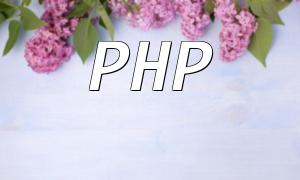PHP is a server-side scripting language commonly used for handling dynamic content, database interactions, and other server-side tasks. JavaScript, on the other hand, is a client-side scripting language primarily used for front-end development, enhancing user interface interactivity. Therefore, the interaction between PHP and JavaScript can leverage the strengths of both technologies, improving website performance and user experience.
The interaction between PHP and JavaScript is typically implemented using AJAX (Asynchronous JavaScript and XML) technology. AJAX allows a web page to request data from the server and update content without reloading the entire page, thus improving user experience.
When using AJAX, an HTTP request is sent to the server, and the response data is processed. Below is a simple example of PHP and JavaScript interaction:
This PHP code generates a JSON response containing the user's name and age.
This JavaScript code sends an AJAX request to fetch data from the server and logs the response to the console.
When implementing PHP and JavaScript interaction, there are several best practices to follow:
When handling user input and server responses, it’s crucial to ensure security by preventing attacks like XSS (Cross-Site Scripting) and SQL injection. Proper input validation and filtering techniques should be applied to reduce risks.
Using JSON (JavaScript Object Notation) as the data exchange format simplifies the interaction between PHP and JavaScript. JSON is easy to parse and is more efficient for network transmission.
AJAX allows you to update parts of a webpage without refreshing the entire page, significantly enhancing user experience. Consider using loading animations when data is being fetched, to inform users that the page is processing information.
PHP and JavaScript interaction has become an essential technique in modern web development. By effectively utilizing AJAX, developers can enhance website interactivity and performance. Mastering this technique is crucial for any developer looking to improve user experience and website quality.
We hope this article helps you better understand PHP and JavaScript interaction techniques. By applying these technologies in real projects, you can bring more vitality and functionality to your website.








